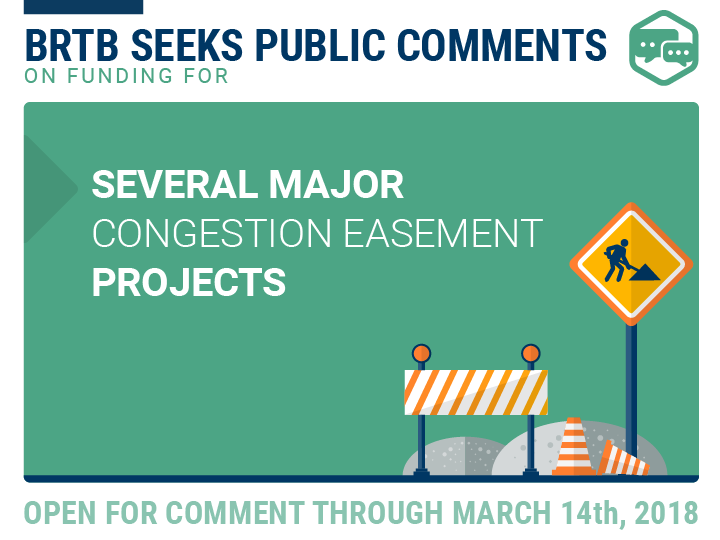
BALTIMORE, MD (February 12, 2018) – The Baltimore Regional Transportation Board (BRTB) welcomes comments through Wednesday, March 14, on new projects and funding updates to the 2018-2021 Transportation Improvement Program (TIP) and/or Maximize2040: A Performance-Based Transportation Plan for five Maryland State Highway Administration (SHA) projects and one Maryland Transportation Authority (MDTA) project.
The BRTB is scheduled to vote on the amendments on Tuesday, March 27, at 9 a.m. The BRTB also will host public meetings on Monday, February 26; Tuesday, February 27; and Monday, March 1.
About Maximize2040 and the TIP
Maximize2040 is this region’s $12.5 billion long-range transportation plan developed by the BRTB. Maximize2040 serves as the blueprint for fiscally constrained transportation planning in the Baltimore region from the year 2020 to 2040. The plan also establishes the region’s broad transportation goals and performance measures, which now serve as guiding principles as the region plans and carries out projects.
The 2018-2021 TIP is the list of regional transportation projects requesting federal funding in the near term. It includes more than $3 billion in proposed federal, state and local money for highway, transit, bicycle and pedestrian projects during the next four years. The funding goes towards maintaining, operating and expanding the transportation system. The TIP is fiscally constrained.
Updates occur in Maximize2040 and the 2018-2021 TIP because of changes to project scope and funding or changes to federal documentation policies. Public comment periods and meetings aim to keep communication open regarding these changes.
###
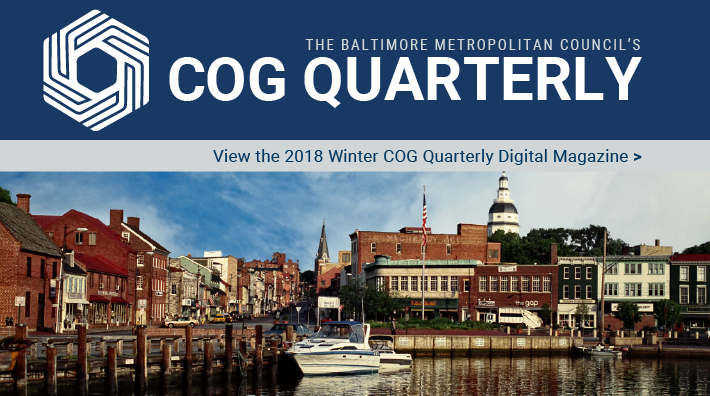
Dear Friends,
When you look at the national news, it’s easy to dismiss Baltimore as a city with great challenges and struggles. But outsiders are discovering what so many of us have known about this region for years: Baltimore is a dynamic destination and it’s only getting better.
Forbes started the momentum when it dubbed us No. 14 on “America’s Coolest Cities to Live” in 2012. Then Zagat crowned Baltimore City No. 2 on “The Top 17 Food Cities of 2015.” So it’s no surprise (but still quite exciting) that we made the New York Time’s “52 Places to go in 2018,” a list of global destinations.
Our Winter 2018 COG Quarterly cover story, “Baltimore Bound,” highlights regional tourism and its intersection with transportation (Page 14). The Baltimore region has something for everyone – whether you’re a foodie or beer connoisseur, a sports fanatic or patron of the arts, nature enthusiast or leisure lover. The tourism industry is a key component of our economy, and it’s an emerging factor in how we approach transportation planning for the future.
Once again, thank you for your interest in BMC and our work.
Sincerely,
Michael B. Kelly
BMC Executive Director
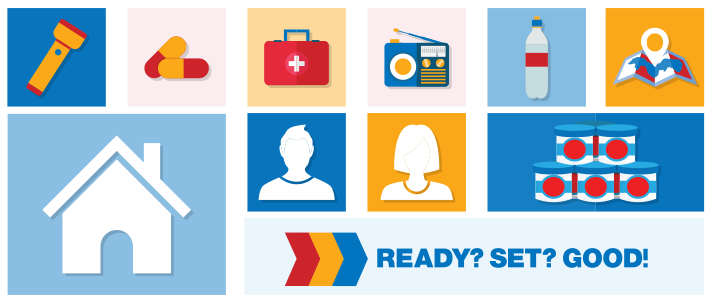
BALTIMORE, MD (April 5, 2018) – Extreme weather, power outages and other disasters happen every day around the world. Residents in the Baltimore region need to prepare at home before an emergency occurs.
“Ready? Set? Good!” is a call-to-action emergency preparedness campaign through the Baltimore Urban Area Security Initiative (UASI) that encourages people to, at minimum, put aside a portable, battery-powered radio, flashlight and one gallon of water per person, per day to help get them through those first critical hours when basic services are down. The campaign targets homeowners, heads of households, moms, dads, caregivers and families to prepare for an emergency before one happens.
The first 72 hours into an emergency are critical. It can take emergency personnel that long to restore basic services – electricity, heat, water, clearing of streets from snow and debris, etc. By preparing at home with a radio, flashlight and water, residents would:know what outside communication is available about the situation; navigate safely around the home; and stay hydrated.
“Ready? Set? Good!” also encourages residents to use a checklist to prepare other items – blankets, non-perishable foods, family plans, pet supplies, etc. Adults should keep a checklist in their wallets or purses as a reminder, and purchase items whenever they are at a store running other errands. For more information, including tips and a checklist of recommended items, visit www.readysetgood.org.
In addition, “Ready? Set? Good!” advertisements will appear on television, radio and digitally through Memorial Day weekend through partnerships with Entercom Communications and the Sinclair Broadcasting Group.
The “Ready? Set? Good!” emergency preparedness campaign is a regional effort funded by the Baltimore UASI, a preparedness grant from the federal government. UASI member jurisdictions include the City of Baltimore, the City of Annapolis, as well as Anne Arundel, Baltimore, Carroll, Harford and Howard counties. The committee also works closely with the Maryland Emergency Management Agency (MEMA).
###
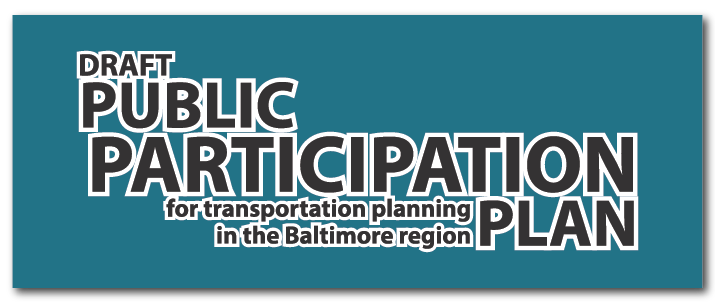
BALTIMORE, MD (April 10, 2018) – The Baltimore Regional Transportation Board (BRTB) will accept comments on a draft of the Public Participation Plan through Thursday, May 24.
View the BRTB's draft Public Participation Plan
The draft of the Public Participation Plan is scheduled for a vote before the BRTB on Tuesday, June 26.
The Public Participation Plan serves as a guide for residents in the Baltimore region to navigate the public process, while also outlining the policies and procedures to ensure that those coordinating the planning process engage the public. The mission of the Public Participation Plan is to provide an open process that offers reasonable access to information, timely public notice, full public access to key decisions, and support for early and continued involvement of stakeholders.
The BRTB’s Public Advisory Committee (PAC) helped to develop the draft through its Public Involvement subcommittee.
###
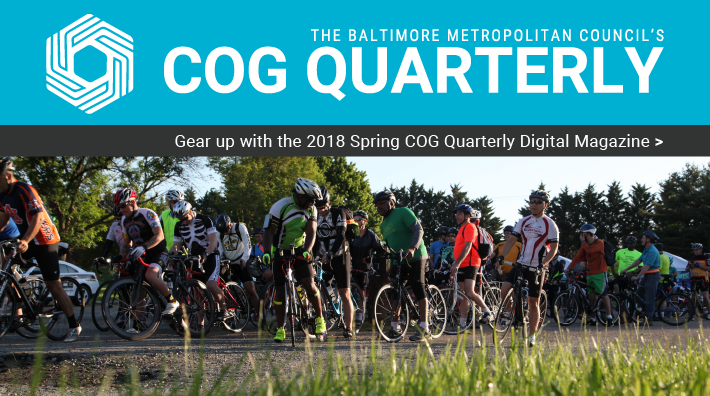
Dear Friends,
The Orioles are back in town, tulips are in bloom and temperatures are again cresting the 70-degree mark. There’s no doubt that spring has sprung in the Baltimore region, which means Bike to Work Day is right around the corner.
In our COG Quarterly cover story, we’re gearing up – literally and figuratively – for Friday, May 18, when our region will celebrate its 21st year of Bike to Work Day. This annual event, encourages commuters from Baltimore and surrounding counties to swap their cars for a bicycle and enjoy a clean, healthy, affordable ride to work. The big day is coordinated each year by BMC and its member counties and generously supported by public and private sponsors. We hope that you’ll join us for this fun event. Please read about Bike to Work Day, as well as some of BMC's other activities in the Spring 2018 issue of COG Quarterly, our digital magazine.
Sincerely,
Michael B. Kelly
BMC Executive Director
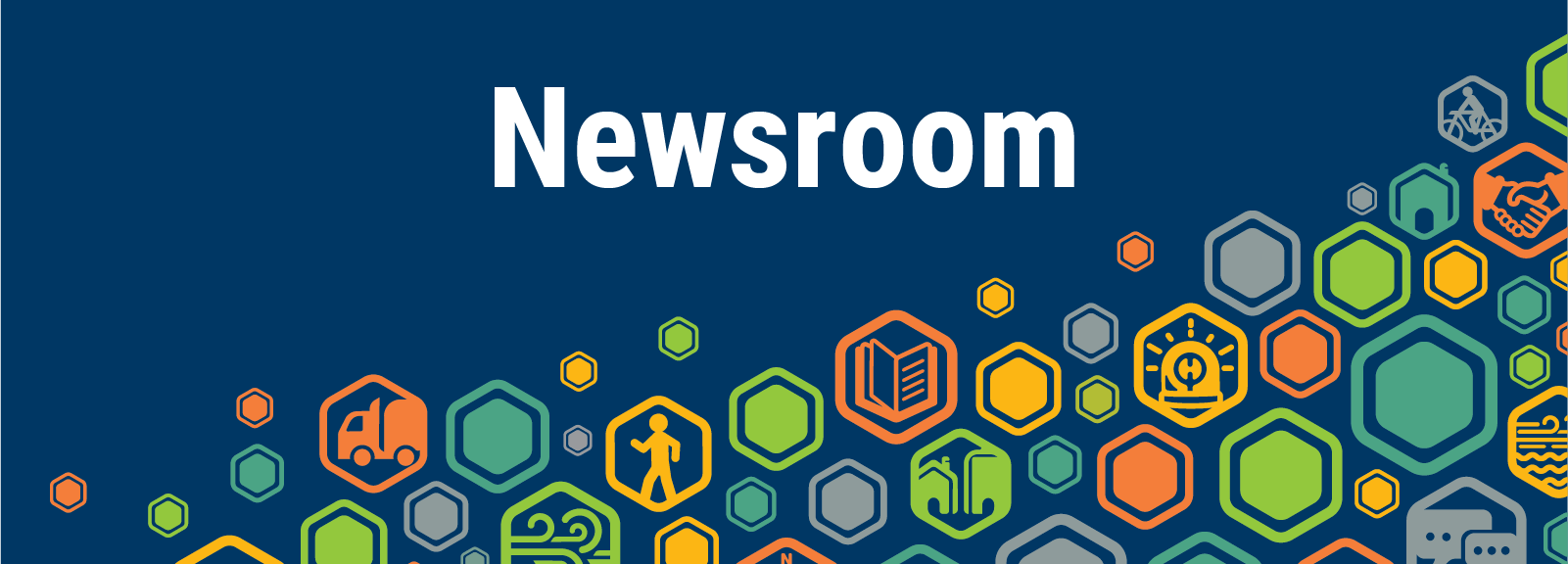
BALTIMORE, MD (May 10, 2018) – The Baltimore Metropolitan Council (BMC) staff grieves the sudden loss of Baltimore County Executive Kevin Kamenetz after hearing the news of his passing earlier this morning.
"We are deeply saddened by the sudden passing of County Executive Kevin Kamenetz, a member of the BMC Board of Directors," said Michael B. Kelly, executive director of the Baltimore Metropolitan Council. "County Executive Kamenetz chaired our board in 2015 and was a strong voice, advocate and leader for our region. Our most sincere condolences go out to his family and friends, as well as to our colleagues in Baltimore County Government."
###
Regional Fair Housing Group
Overview
Since 1996, local governments in the Baltimore metropolitan area have coordinated in carrying out their duty to affirmatively further fair housing under the federal Fair Housing Act of 1968. Most recently they have worked with the Baltimore Metropolitan Council (BMC) and local public housing authorities (PHAs) to create a new 2025 Regional Analysis of Impediments to Fair Housing Choice (AI) - Draft , analyzing fair-housing-related disparities in opportunity and creating action plans to address them over the coming five years. Since 2012, also with assistance from BMC, the jurisdictions and PHAs have implemented their 2012 and 2020 Regional Fair Housing Plans, including establishing a Regional Rental Housing Affordability Preservation Policy and a Regional Project-Based Voucher Program.
Purpose and Mission
To provide a forum where local governments and public housing authorities (PHAs) in the Baltimore area can carry out coordinated planning and implementation of their duty to affirmatively further fair housing.
Membership
The Fair Housing Group includes housing and community development officials from the cities of Annapolis and Baltimore, as well as Anne Arundel, Baltimore, Harford, and Howard Counties. It also includes representatives from those jurisdictions' human relations or civil rights agencies as well as leaders from public housing authorities in each of the jurisdictions. The chair and vice chair positions rotate annually among the members.
Regional AI Stakeholder Work Group
Overview
The Baltimore Regional Fair Housing Group created the Regional AI Stakeholder Work Group to provide thoughtful and continuous advice as the Fair Housing Group carries out its 2020 Regional Analysis of Impediments to Fair Housing Choice (AI). Coordinating this Regional AI is part of BMC’s Regional Fair Housing Planning work. The Stakeholder Work Group met 11 times between October 2018 and March 2020 to review key data related to fair housing and to make suggestions, shape the analysis and resulting goals and priorities, and review the draft AI document.
The Work Group brought together representatives of racial, ethnic, and religious groups protected under the Fair Housing Act, organizations working for people with disabilities, State agencies, policy experts, and civic and community representatives. Participants were drawn from jurisdictions participating in the analysis: the Cities of Annapolis and Baltimore and Anne Arundel, Baltimore, Harford, and Howard Counties. Its work has helped to shape the Baltimore Regional AI scheduled to be completed in May 2020.
Purpose and Mission
- To help the Fair Housing Group review and interpret data provided by HUD for the 2020 Regional AI
- To suggest readily available local data that will enhance the AI
- To provide further input into analysis and significance of data and development of goals and priorities
Membership
The Work Group includes stakeholders around the region who are diverse geographically, demographically, and in terms of constituency, interest, and policy area. It seeks to represent classes protected by the Fair Housing Act, related State agencies, civic and community interests, residents of subsidized housing, local civil rights agencies, and also policy experts in areas related to fair housing, such as education, public health, and transportation.
Housing Affordability Preservation Task Force
Overview
The region’s 2012 Analysis of Impediments to Fair Housing Choice (AI) identified the loss of existing affordable rental units regionally as an impediment to fair housing. As a result, in 2016 the region's housing agencies in Baltimore City and Anne Arundel, Baltimore, Harford, and Howard Counties established a policy to address this impediment. The policy created the Regional Rental Home Affordability Preservation Task Force to be the key vehicle for coordinated public- and private-sector strategy and action toward a goal of zero net loss of rental home affordability at 50% of the Baltimore area median income (AMI) and below. The Task Force meets periodically to review properties potentially at risk of losing their affordability, learn about potentially useful preservation strategies, and chart a course forward.
Purpose and Mission
- To preserve current affordable rental home resources where possible and develop strategies to create new affordability when existing resources are lost.
- To promote coordination among local and state government and interested private sector parties to achieve that goal.
Membership
The Task Force includes local housing agency staff, state and federal housing officials, private sector housing and community development representatives, affordable housing developers, public and private sector disability experts, and fair housing advocates. The membership is generally described in the regional policy and includes officials who can strategize and potentially bring resources to assist in addressing the challenge.
Housing Committee
Overview
BMC’s Housing Committee serves as the primary forum for cooperative dialogue among local jurisdictions, housing authorities, and stakeholders regarding implementation of the Regional Fair Housing Action Plan in the Baltimore Regional Analysis of Impediments to Fair Housing Choice (AI).
The Housing Committee annually reviews and provides input into the AI Implementation Plan prepared by the Baltimore Regional Fair Housing Group. The Housing Committee also serves as a key forum for discussing the allocation of State affordable housing resources as well as other key related topics such as transportation infrastructure and health and equity initiatives.
Purpose and Mission
- To facilitate routine interaction and cooperation among the Regional Fair Housing Group, BMC, and diverse public- and private-sector stakeholders regarding the implementation of the Regional AI.
- To provide a forum to discuss issues related to housing in the Baltimore metropolitan area.
Membership
The Housing Committee includes representatives from local housing agencies, state agencies on housing and disabilities, fair housing advocates, affordable housing and community development organizations, multifamily housing representatives, and other stakeholders. The chair and vice chair positions rotate annually among members of the Baltimore Regional Fair Housing Group.
